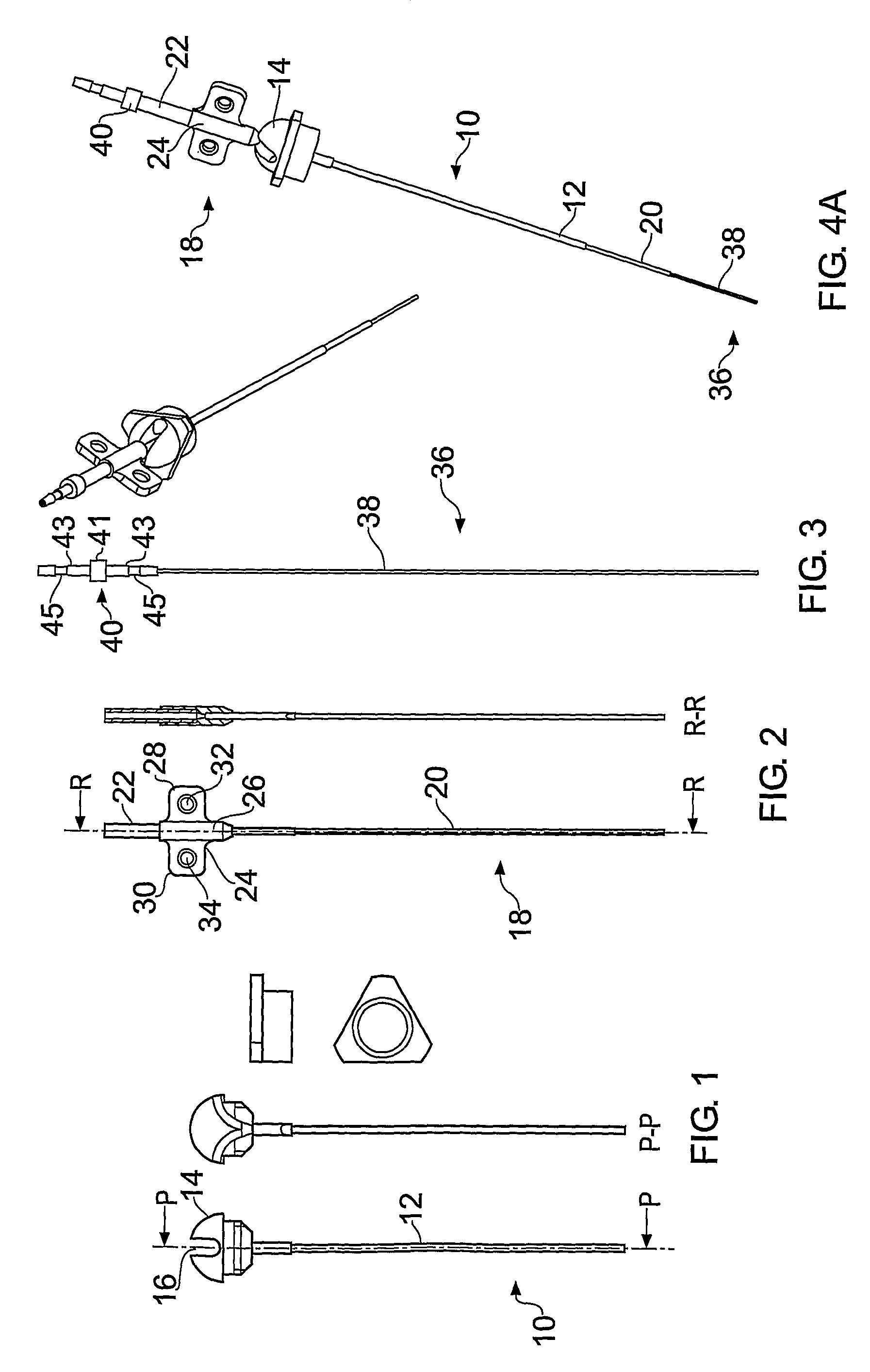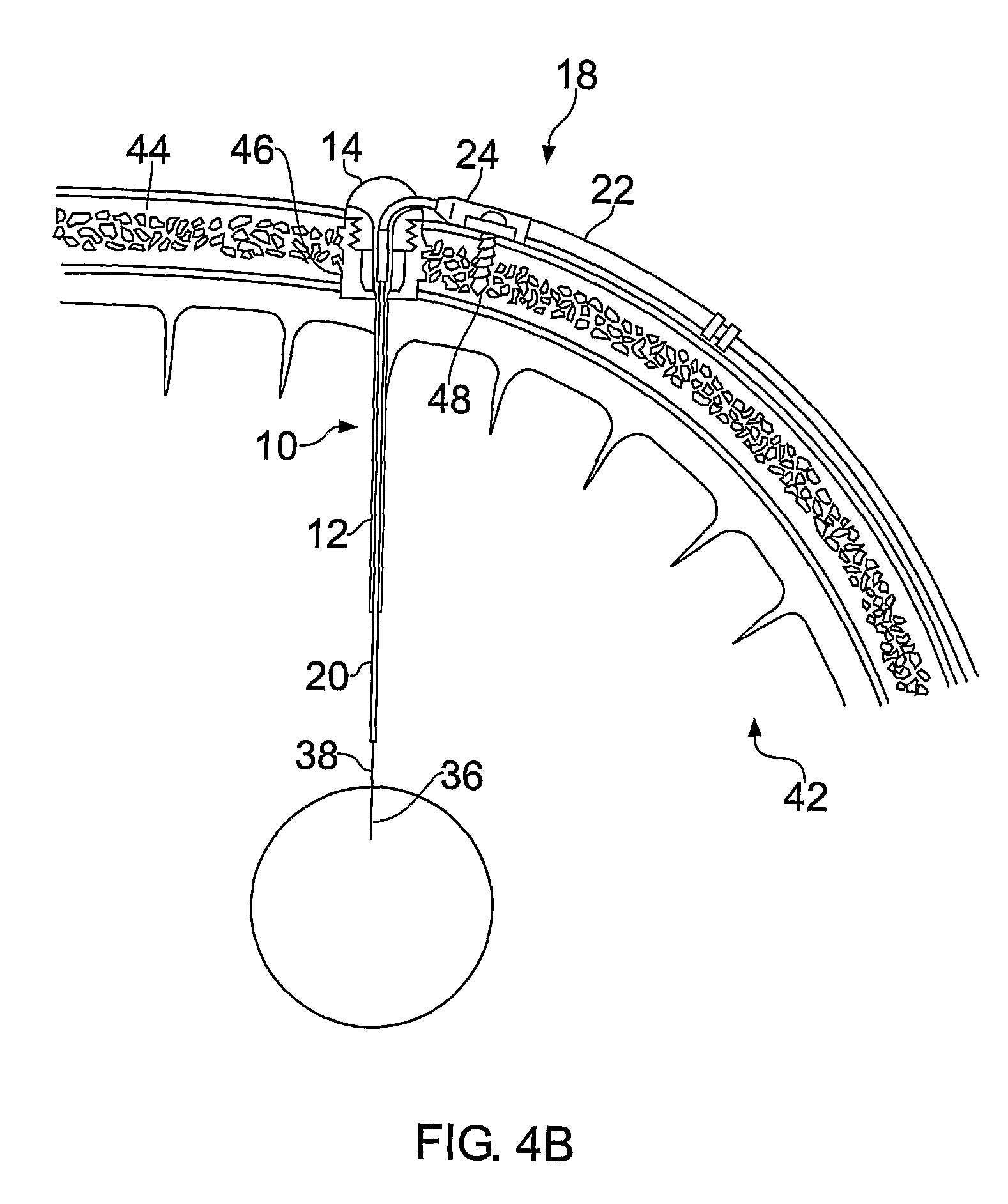Neurosurgical instruments
a neurosurgical and instrument technology, applied in the direction of surgery, guide wires, catheters, etc., can solve the problems of reducing the delivery to the tissue, affecting the delivery of drugs through the extracellular space, and reducing the delivery of infusate directly into the cerebrospinal fluid
- Summary
- Abstract
- Description
- Claims
- Application Information
AI Technical Summary
Benefits of technology
Problems solved by technology
Method used
Image
Examples
Embodiment Construction
[0028]FIGS. 1-3 illustrate a guide tube, inner tube and catheter respectively according to the present invention.
[0029]The guide tube 10 is shown in FIG. 1 and comprises a length of tube 12 with a hub 14 at one end. In this example it is made from a polyurethane plastic such as carbothane 55 DB20. However, it may be made from any material which is biocompatible and sufficiently rigid at room temperature to maintain its central aperture. In this example, the tube 12 has an outer diameter of 0.6 mm and an inner diameter of 0.5 mm.
[0030]The guide tube is inserted into the brain through an aperture (e.g. burr hole) in the skull created by the surgeon. Once the length of tubing is inserted into the brain, the hub can be attached to the patient's skull, for example by bonding into a burr hole in the skull using an acrylic cement. A wire may be used to guide the guide tube into place, as disclosed in WO03 / 07784. Before insertion, the guide tube is cut to a length short of the target. The d...
PUM
| Property | Measurement | Unit |
|---|---|---|
| inner diameter | aaaaa | aaaaa |
| inner diameter | aaaaa | aaaaa |
| diameter | aaaaa | aaaaa |
Abstract
Description
Claims
Application Information
 Login to View More
Login to View More - R&D
- Intellectual Property
- Life Sciences
- Materials
- Tech Scout
- Unparalleled Data Quality
- Higher Quality Content
- 60% Fewer Hallucinations
Browse by: Latest US Patents, China's latest patents, Technical Efficacy Thesaurus, Application Domain, Technology Topic, Popular Technical Reports.
© 2025 PatSnap. All rights reserved.Legal|Privacy policy|Modern Slavery Act Transparency Statement|Sitemap|About US| Contact US: help@patsnap.com



